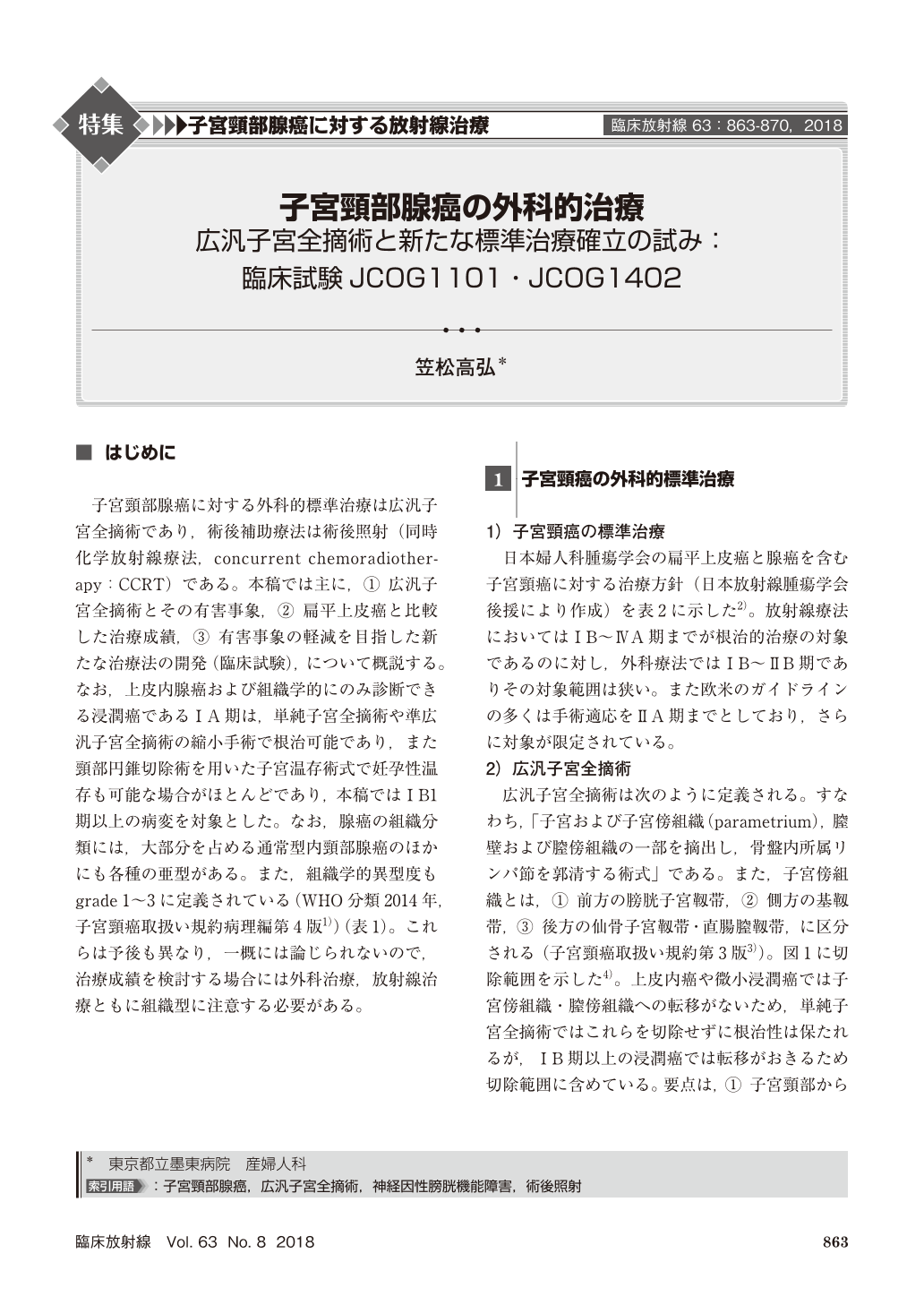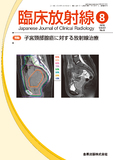Japanese
English
- 有料閲覧
- Abstract 文献概要
- 1ページ目 Look Inside
- 参考文献 Reference
子宮頸部腺癌に対する外科的標準治療は広汎子宮全摘術であり,術後補助療法は術後照射(同時化学放射線療法,concurrent chemoradiotherapy:CCRT)である。本稿では主に,① 広汎子宮全摘術とその有害事象,② 扁平上皮癌と比較した治療成績,③ 有害事象の軽減を目指した新たな治療法の開発(臨床試験),について概説する。なお,上皮内腺癌および組織学的にのみ診断できる浸潤癌であるⅠA期は,単純子宮全摘術や準広汎子宮全摘術の縮小手術で根治可能であり,また頸部円錐切除術を用いた子宮温存術式で妊孕性温存も可能な場合がほとんどであり,本稿ではⅠB1期以上の病変を対象とした。なお,腺癌の組織分類には,大部分を占める通常型内頸部腺癌のほかにも各種の亜型がある。また,組織学的異型度もgrade 1~3に定義されている(WHO分類2014年,子宮頸癌取扱い規約病理編第4版1))(表1)。これらは予後も異なり,一概には論じられないので,治療成績を検討する場合には外科治療,放射線治療ともに組織型に注意する必要がある。
Radical hysterectomy followed by adjuvant radiotherapy is widely accepted as the standard surgical procedure for patients with FIGO stageⅠB-ⅡB adenocarcinoma of the uterine cervix. In our retrospective study, there was no significant difference in survival or relapse, after adjusting for other clinicopathological characteristics, between the adenocarcinoma and squamous cell carcinoma at any pathological stage. However, surgical damage to the pelvic autonomic nerve can occur after the wide resection of parametrial and paravaginal tissue causing long-term severe neurogenic bladder, whereby patients are unable to empty their bladder and suffer a loss of the sense of urgency to void after surgery. The Japanese Clinical Oncology Group study 1101(JCOG 1101)is a multi-institutional non-randomized confirmatory PhaseⅢ trial to evaluate the efficacy of non-radical hysterectomy without bladder dysfunction for patients with tumor diameter ≤2cm with FIGO stageⅠB1 uterine cervical cancer confirmed by magnetic resonance imaging(MRI)before surgery in comparison with radical hysterectomy.

Copyright © 2018, KANEHARA SHUPPAN Co.LTD. All rights reserved.


